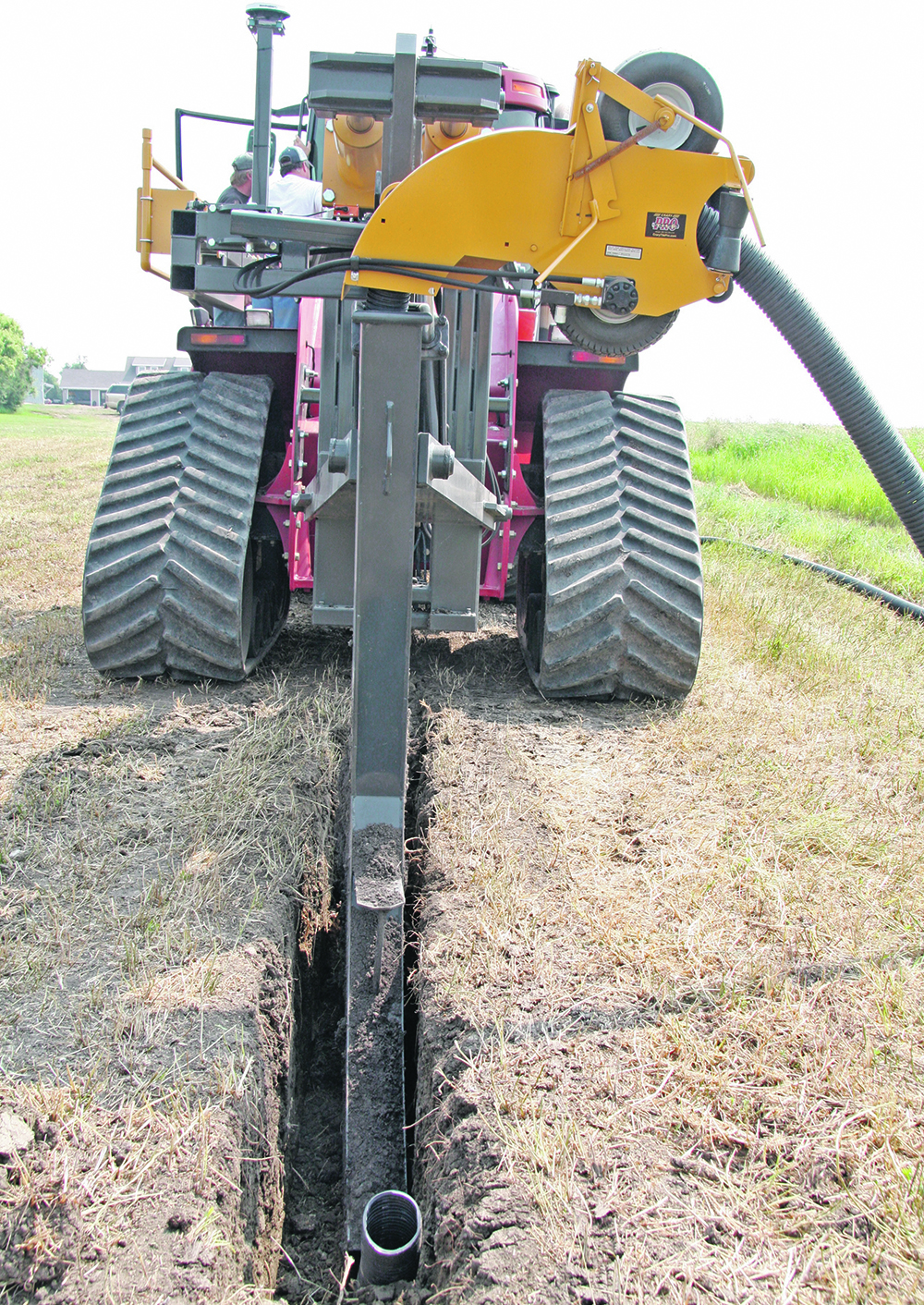Companies that install the drainage system have taken more questions from farmers looking for ways to manage waterlogged fields
It’s been a rainy spring in the eastern half of the Prairies and Garnet Peters’ phone has been ringing more than usual.
Peters is the president and chief executive of the PLS Group of Companies, a business near Morden, Man. that installs tile drainage on farmland.
“When it rains, you get calls.” Peters said in mid-May. “We are getting more inquiries. More questions on how it works.”
Farmers are likely calling PLS, which operates Precision Land Solutions and Accupipe, because hundreds of fields have been soaked or worse this spring in Manitoba.
Read Also

Using artificial intelligence in agriculture starts with the right data
Good data is critical as the agriculture sector increasingly adopts new AI technology to drive efficiency, sustainability and trust across all levels of the value chain.
Environment Canada data shows that 268 millimetres of rain and snow fell on Winnipeg in April and May, making it the second wettest April and May on record.
Installers of drainage tile were busy in Manitoba and other parts of the Prairies for much of the 2010s because excess rain and saturated soils were common problems for many farmers.
But that changed a few years ago, when the weather pattern shifted from wet to dry.
“Wet cycles (a wet year) usually produce business for two or three years…. 2020 was a very good year, as far as quantity (of acres),” Peters said. “2021 was definitely down… due to the worst drought in 100 plus years.”
Tile drainage involves placing perforated, polyethylene pipes under a field so water can be removed from the soil. It isn’t a typical practice in Western Canada. It’s more commonplace in Ontario, where many producers choose to improve their existing land rather than expand the farm.
Fifteen years ago, almost all drainage tile in Manitoba was installed on potato land. Recently, more corn and canola growers are installing tile.
“We’ve had years where not even 50 percent of what we tile is on potato ground,” Peters said.
Installing tile is not cheap. The cost ranges from $1,000 to $1,500 per acre depending on the slope of the land and drainage around the field.
“Your topography and soil plays the biggest role in the cost of a tile project…. You have to design according to each field,” Peters said.
“Fields with adequate outlets (not requiring a lift station), allow for smaller mains due to topography… are typically less expensive.”
A rainy spring and cropland that resembles a lake is one reason to install tile.
Another is soil salinity.
“(Dissolved salts) have always been there but when you go through dry periods they just get pushed down. When you get the wet periods and the water table rises to the surface … previously farmable land becomes very difficult,” said Tom Scherer, an ag engineering professor at North Dakota State University.
To prevent salts from rising to the surface it’s necessary to remove them through subsurface drainage, he added.
Aaron Hargreaves, who farms near Brandon, told The Western Producer several years ago that certain saline patches on his cropland produced almost nothing before he installed tile. After tile, they became just as good as other parts of the land. So, the saline patches went from zero production to average production.
One of the most common questions that Peters gets about tile is, “how much will it improve my crop yields?”
That’s a tricky question to answer. The value of tile depends on the year. In an extremely wet June or a wet fall, it could make all the difference.
“Our potato guys will say it was the difference between a crop and no crop,” Peters said.
“It’s not a spreadsheet thing, where you can say, ‘OK, I’m going to get 10 percent yield increase for the next 10 years’.”
Wet weather in the spring may cause Peters’ phone to ring more often, but two other factors will have a bigger impact on the future of tile drainage in Western Canada: land prices and commodity prices.
When canola is $20 a bushel and corn is at US $7.50, spending money to stabilize yield makes economic sense. It also makes sense to invest $1,000 per acre in an existing land base if buying more land and expanding the farm becomes too expensive.
















